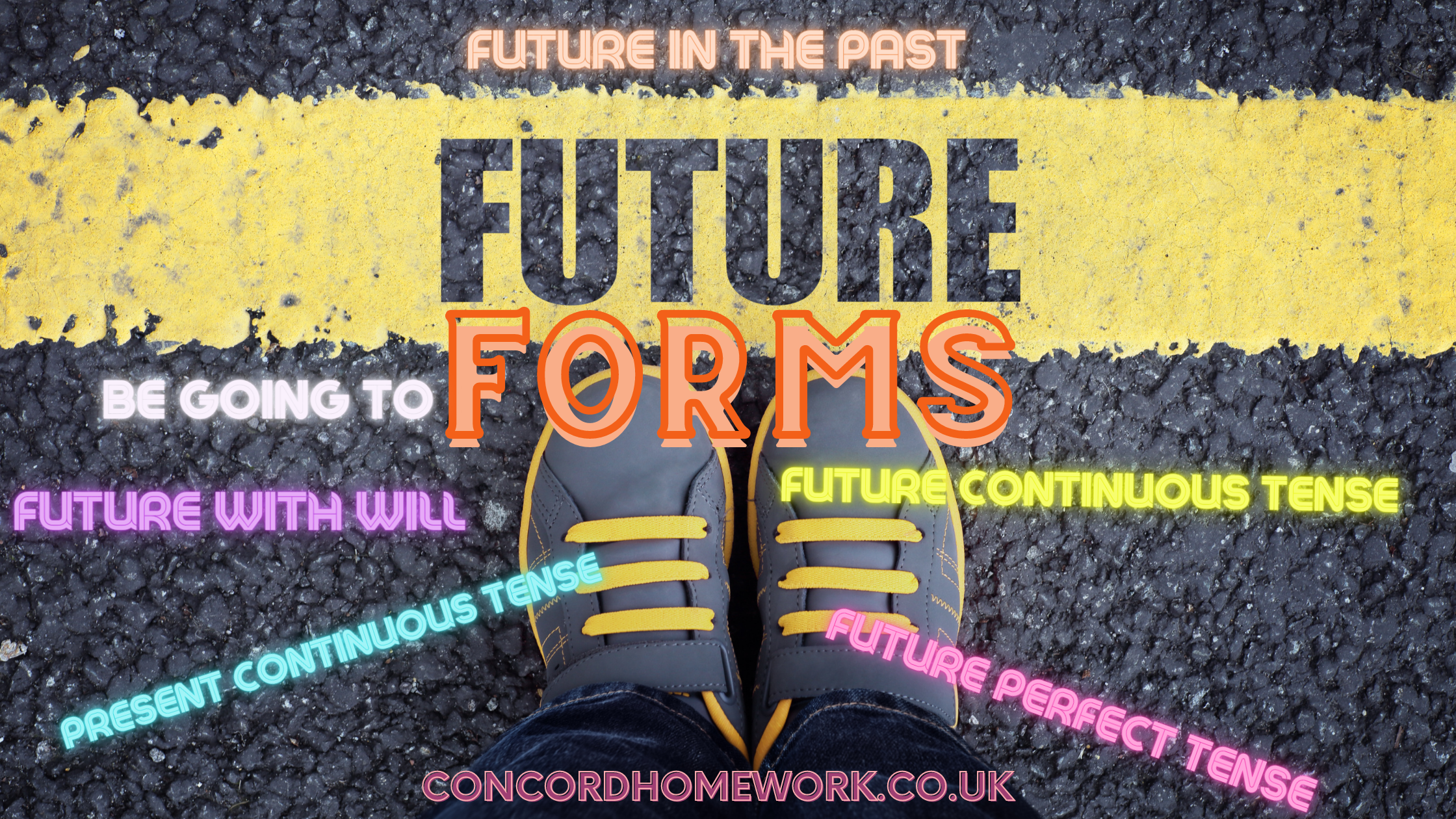Future Forms
English has several forms which express future events, and which one the user selects depends on how he or she sees the event as much as its certainty or nearness to the present.
1 will
Will can function as an auxiliary of the future in simply predicting a future event.
Examples: The Prime minister will open the new hospital next Thursday.
Tomorrow will be warm and sunny everywhere.
Will can also function as a modal auxiliary to express ideas of willingness and spontaneous intention.
Examples: Will you help me for a minute?
‘There’s no more milk!’ ‘I’ll go and get some.’
2 going to
Going to expresses a premeditated intention.
Examples: I’m going to decorate the bathroom this weekend.
The government is going to reorganize the entire civil service.
Going to is also used to predict a future event for which there is some evidence now.
Examples: Great news! I’m going to have a baby!
The crowd is very angry. I think there’s going to be a riot.
3 The Present Continuous
The Present Continuous is used to express an arrangement, usually for the near future.
Examples: ‘What are you doing tonight? ‘I’m going out for a meal.’
It is wrong to use the Present Simple in this sense. We cannot say *What do you do tonight?’ or *Do you go to the party on Saturday?
The Present Continuous cannot be used to express an event that has not been arranged by human beings. We cannot say raining tomorrow, or *The sun is rising at 5.00 tomorrow morning.
4 The Present Simple
The Present Simple is used to express a future event which is seen as being certain because of a timetable or calendar.
Examples:
What time does the film start?
My train gets in at 11.00.
The Cup Final takes place on 13 April.
5 The Future Continuous
The Future Continuous expresses an activity that will be in progress around a specific time in the future.
Examples:
Don’t phone at 8.00 – I’ll be having supper.
This time tomorrow I’ll be flying to Hong Kong.
The Future Continuous also expresses an action that will occur in the natural course of events, independently of the will or intention of anyone directly concerned.
In a few minutes, we will be landing at Heathrow Airport.
(Of course, the pilot has not just decided this!)
Hurry up! The bus will be leaving any minute!
The Future Continuous is often used to express a casual or polite question about someone’s future plans. The speaker is trying not to impose his/her will in any way. This is related to the use of the Future Continuous described above, i.e. that it can express an action that will occur independently of the will or intention of the people concerned.
Compare:
Will you bring Kate to the party? (Perhaps a request.)
Will you be bringing Kate to the party? (I’m just asking.)
6 The Future Perfect
The Future Perfect expresses an action that will be completed before a definite time in the future.
Examples:
I’ll have finished my work by the time you get back.
Most of the leaves will have fallen by the end of November.
7 is/are to
In formal contexts, an arrangement is sometimes referred to as something that is to happen. This usage is frequently found in news reports.
Examples:
The Duchess of Cambridge is to open the new college during her visit to the town in October.
World leaders are to meet in Geneva on Saturday.
8 The future in the past
Sometimes when we are talking about the past, we want to refer to something that was in the future at that time. This is called the ‘future in the past’, and it is expressed by was/were going to, the Past Continuous, or would, and was/were to. Would is very common in reported speech and thought.
Examples:
The last time I saw you, you were going to start a new job. Did you?
I was in a hurry because I was catching a plane that afternoon.
He said he’d give me a lift.
It was announced that the manager was to resign after the World Cup.
The uses of these four forms are exactly parallel to going to, the Present Continuous, and will, and is/are to, as used to refer to the real future.
I’m going to start a new job. (intention)
I’m catching a plane this afternoon, (arrangement)
I’ll give you a lift, (offer)
The manager is to resign, (formal arrangement)
* The future in the past is often found in narratives.
Example:
Alice smiled as she thought of the evening to come. She was meeting Peter, and together they were going to see a play at the Adelphi Theatre. She was sure the evening would be enjoyable.
Download “Future forms in English explained” in pdf.
Download “Future forms exercise” in pdf.
Source of the grammar points:
SPEAKOUT ADVANCED ENGLISH WORKBOOK by PEARSON
“Thank you for taking the time to explore this topic with us! We hope you found the information helpful and insightful. Have any thoughts, questions, or additional examples to share? We’d love to hear from you in the comments below!
Don’t forget to spread the word by sharing this blog with your friends, family, and colleagues. Together, let’s continue to learn, grow, and connect with the world around us. Happy reading and sharing!”




















